011 - Utah Forest Types: An Introduction to Utah Forests
Introduction
Utah is known more for its red rock than for its forests, but trees cover about a third of the state. This equals over 15 million acres of scattered forest and woodland found in locations where conditions are just right for trees. About five million of those acres are upland forests of aspen and various conifers. The rest are lower elevation forests in foothills and along stream bottoms and are referred to as woodlands.
Forests, Elevation, and Aspect
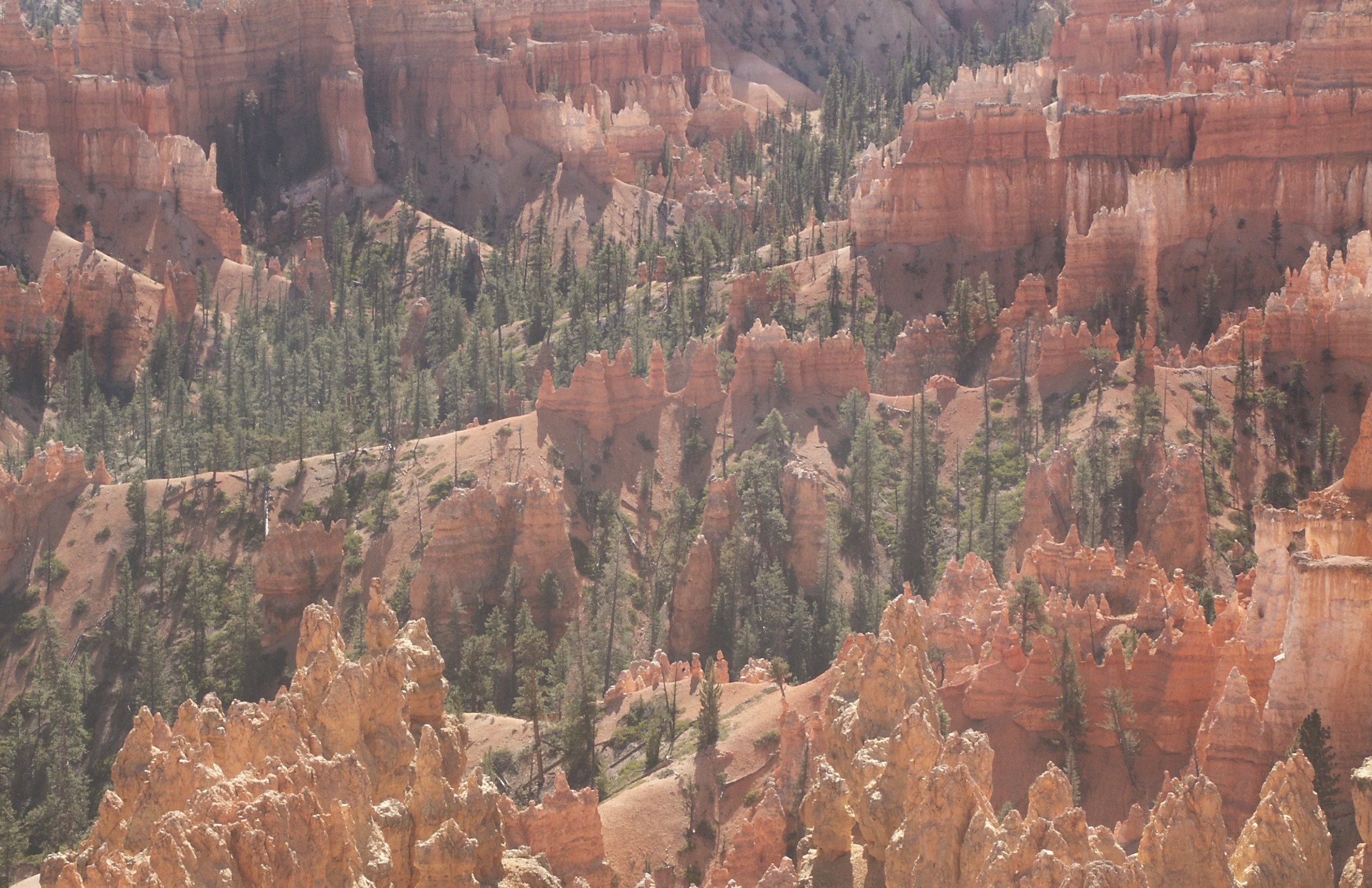
Ponderosa pine in Bryce Canyon National Park
Elevation and aspect play a significant role in the ecology of Utah forests, mainly through their effect on water availability. Generally, if enough water is available in the soil, trees will be found. The most productive evergreen or coniferous forests grow in upper elevation basins and mountain slopes, and favor northern to eastern aspects. High elevation means more precipitation and cooler temperatures, both good for trees. Lower elevation valley bottoms, on the other hand, have lower precipitation and water is available only near streams, so they tend to have no forests except for cottonwoods and willows near those streams. Midelevation foothills get slightly increased precipitation and tend to have woodlands of drought-tolerant trees like pinyons, junipers, oaks, and maples. Often these woodlands are thickest or are only present on more northern and eastern aspects. South and west aspects are the hottest and driest and often won’t have any trees. Other factors that determine where forests and woodlands are found and how well they do include temperature, soil, grazing/browsing, aggressive weeds, and fire.
Forest Types
Forest and woodland ecological communities can be better understood by separating them into categories called forest types. Forest types are defined by their dominant tree species, each type having its own ecological characteristics that respond to natural and human-caused disturbances in specific ways. Utah has about 15 different forest types that include forest species like quaking aspen, Engelmann spruce, Douglas-fir, lodgepole pine, and ponderosa pine, and woodland species like pinyons, junipers, oaks, and maples.
Pinyon-Juniper Type
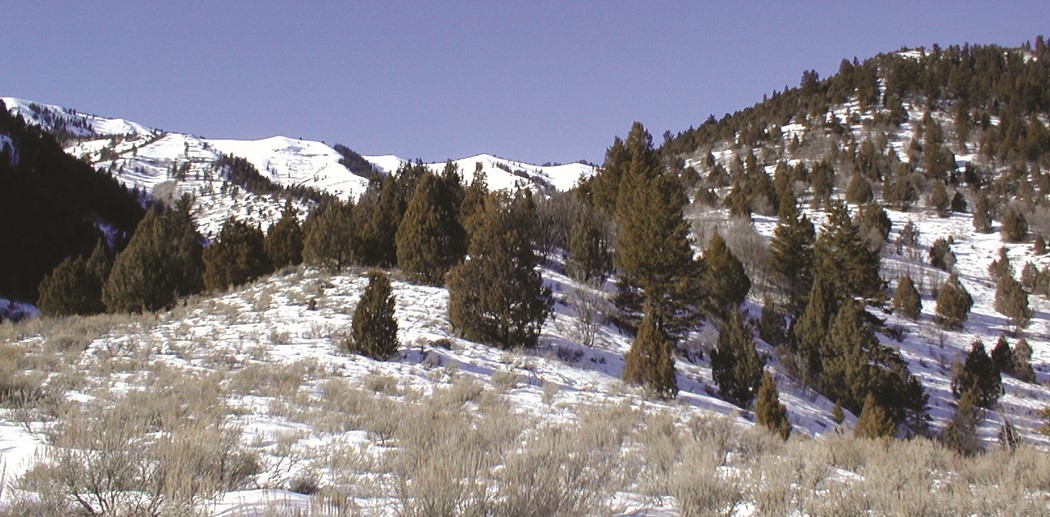
The forest type with the greatest land area in Utah is pinyon-juniper (PJ), which generally occurs in the foothills. Utah has two kinds of pinyons, singleleaf (Pinus monophylla) and Colorado (P. edulis), and two tree-sized junipers (often called cedars), Utah (Juniperus osteosperma) and Rocky Mountain (J. scopulorum). They often grow together, but they also grow with other tree species like mountain-mahogany (Cercocarpus species), ponderosa pine, white fir, or Douglas-fir. PJ density has increased in the past century due to fire suppression and grazing. These dense stands burn intensely, and some scientists fear that these intense fires threaten the health and longevity of this forest type.
- 8 million acres at 5,000 to 8,000 feet elevation.
- Occupy the driest forested sites.
- Nearly 60 percent of Utah forest cover.
- Important for wildlife habitat and livestock grazing.
- Used for fence posts and poles, firewood, mine props, charcoal, Christmas trees, and pinyon nuts.
- Widely distributed, from mixed stands in southern Utah to pure juniper stands in northern Utah.
- The Raft River Mountains in northwest Utah are the northern-most range of singleleaf pinyon.
- High scenic/recreation value in some areas.
- Pinyon engraver beetle significantly affects both species of pinyon.
Aspen Type
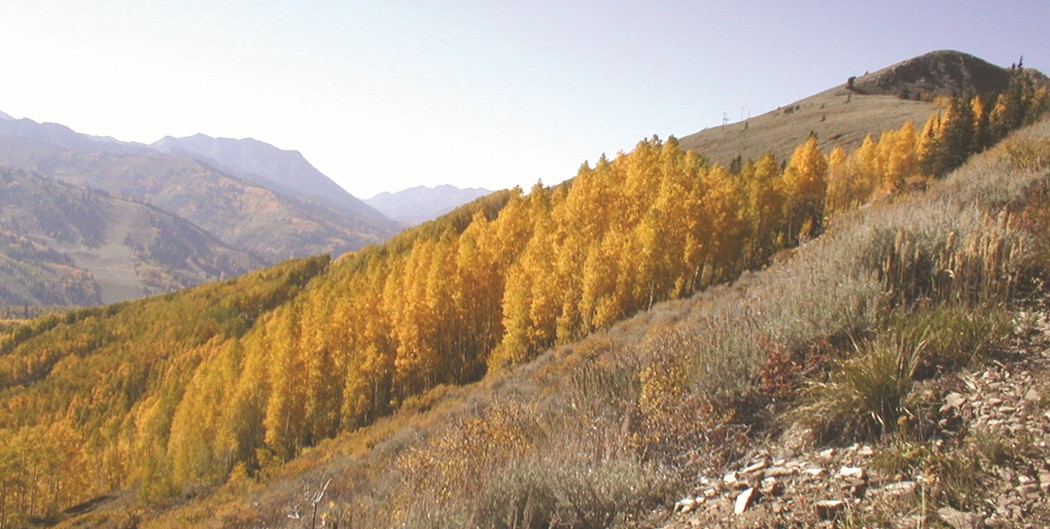
Quaking aspen (Populus tremuloides), or quakies, are Utah’s second most common forest type, covering over 1.4 million acres. They are best known for their brilliant yellow to orange fall color, and for being carved on by sheepherders and others. Aspen is found on relatively moist sites. The trees grow together in clones, or groups of stems that share the same root system and genetic makeup. They can be found from canyon bottoms to upper elevation slopes and often grow with conifers like subalpine fir and spruce. Scientists have shown that there are far fewer aspens in Utah now than in the 1800s, and are concerned that conifers are encroaching upon traditional aspen habitat. The diversity and abundance of forest floor plants in an aspen stand can be ten times that found on the floor of a stand of evergreen trees.
- 1.4 million acres at 7,000 to 10,000 feet elevation.
- Important for wildlife habitat, grazing, biodiversity, and aesthetics.
- Easily regenerates after clearcutting or burning by producing numerous root sprouts; rarely reproduces from seed in the West.
- Root damage during logging can reduce sprouting.
- Initially out-competes associated conifers after a clearcut or fire by sprouting from established root system, forming large, genetically identical clones.
- Shade intolerant and short-lived, so lack of disturbance eventually leads to replacement by more shade tolerant conifers like spruce and fir; this is common in Utah due to fire suppression.
- Slowly spreads into non-aspen sites by root system outgrowth and sprouting.
- Replacement of aspen by existing conifers can be encouraged by cutting or girdling aspen while leaving the conifers alone.
- Clearcutting a mixed aspen-conifer stand is likely to lead to replacement with pure aspen.
Douglas-fir Type

The next most common forest types are those dominated by Douglas-fir (Pseudotsuga menziesii) and white fir (Abies concolor). Douglas-fir is very common and tends to grow in fairly pure stands, while white fir is more scattered and less common. These mid-elevation species cover more than one million acres. Early pioneers sought out Douglas-fir for building material, sometimes calling it red pine because it is an evergreen with reddish heartwood. There are at least five canyons in Utah named Red Pine. One easy identifier for Douglas-fir is the mouse-tail bracts that stick out from under the cone scales.
- 1 million acres at 6,000 to 9,000 feet elevation
- Important timber and recreation resource and provides critical wildlife habitat.
- Refers to sites where Douglas-fir could dominate, but other species may be present, including true firs, spruces, and lodgepole and ponderosa pines.
- Intermediate shade tolerance, so undisturbed Douglas-fir can be replaced by more shade tolerant subalpine fir or Engelmann spruce; fairly common in Utah due to fire suppression.
- Use group selection or shelterwood for reproduction since most associated species need protection to regenerate naturally or as planted seedlings.
- Clearcutting if aspen or lodgepole pine is present will likely regenerate the stand to those species.
- Careful overstory removal can encourage natural regeneration where adequate advanced regeneration is present.
- Clearcutting or overstory removal without adequate advanced regeneration will convert to shade intolerant species or to a poorly stocked stand of shade tolerant species such as subalpine fir.
- Important pests are western spruce budworm, bark beetles, and dwarf mistletoe; to control and improve stand vigor, increase species and age-class diversity.
Spruce-fir Type
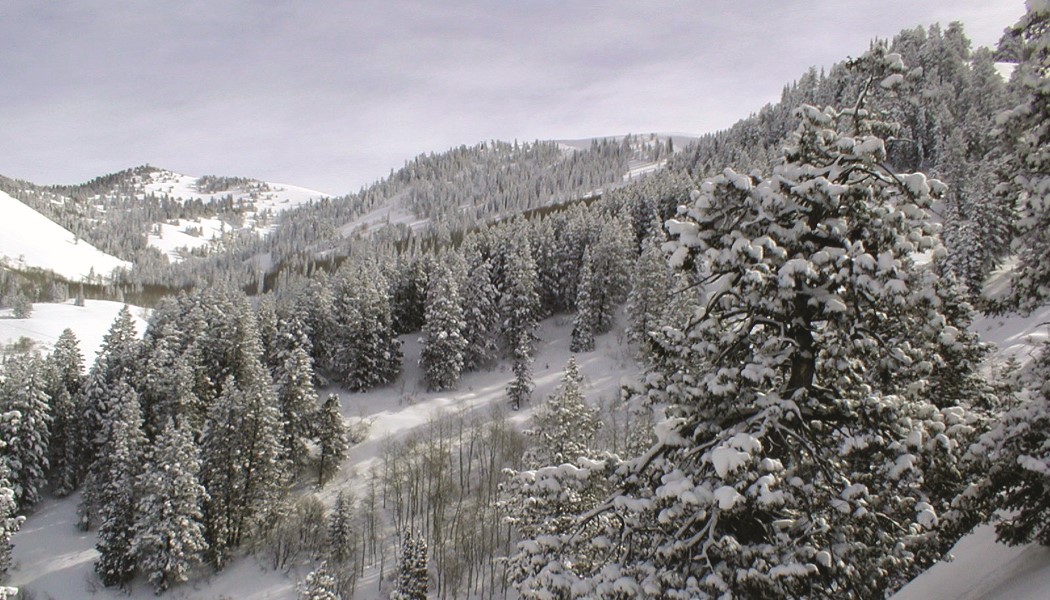
Spruce-fir is the fourth most common coniferous forest type in Utah, and is generally found at higher elevations. It occurs as stands of Engelmann spruce (Picea engelmannii) mixed with subalpine fir (Abies lasiocarpa) and in association with Douglas-fir, white fir, and aspen, as well as various pines. The great majority of spruce found in Utah is Engelmann spruce, while about five percent is blue spruce (Picea pungens). Spruce is an important timber species in Utah, valued for its clear, straight grain. Spruce is also used for house logs. A massive spruce beetle epidemic currently is devastating much of Utah’s spruce forest.
- 3/4 million acres at 8,000 to 10,000 feet elevation.
- Important for wood fiber, though spruce is worth considerably more than fir; wildlife habitat, recreation, and watershed values also important.
- Highest elevation type; dominated by subalpine fir, which is very shade tolerant, and Engelmann spruce, which is slightly less tolerant.
- Other associated species are lodgepole and limber pine, Douglas-fir, and aspen.
- Regeneration after harvest is difficult; group selection and shelterwood methods can be used; protection is needed for seedling survival; planting and protection of advanced regeneration help.
- Stands can be very complex in structure and age distribution; group shelterwood can be used in more uneven-aged stands; openings should be less than two times tree height for good protection.
- Fires are infrequent but important in dry years; windthrow is an important disturbance factor.
- Root disease, bark beetles, and western spruce budworm are significant pests; to control spruce beetle, remove attacked or susceptible trees and treat slash.
Pine Types
Several pine forest types exist in Utah, including ponderosa, lodegpole, limber, and bristlecone types. Pines are intolerant of shade and more drought tolerant than many of their associated species.
Ponderosa Pine
Ponderosa pine (Pinus ponderosa) is the pine of Bryce Canyon National Park, and is found from the Uintas south. Ponderosa is our largest pine, eventually getting an orange-yellow bark that earns it the name yellow pine, as in Yellow Pine Campground on the Uinta National Forest.
Lodgepole Pine
Lodgepole pine (Pinus contorta) covers nearly a half million acres in Utah, mostly at higher elevations in and north of the Uintas. Lodgepole is relatively short-lived (150 years), but it grows straight and tall on good sites. It is used for lodge poles and fence poles, as well as lumber.
Limber Pine
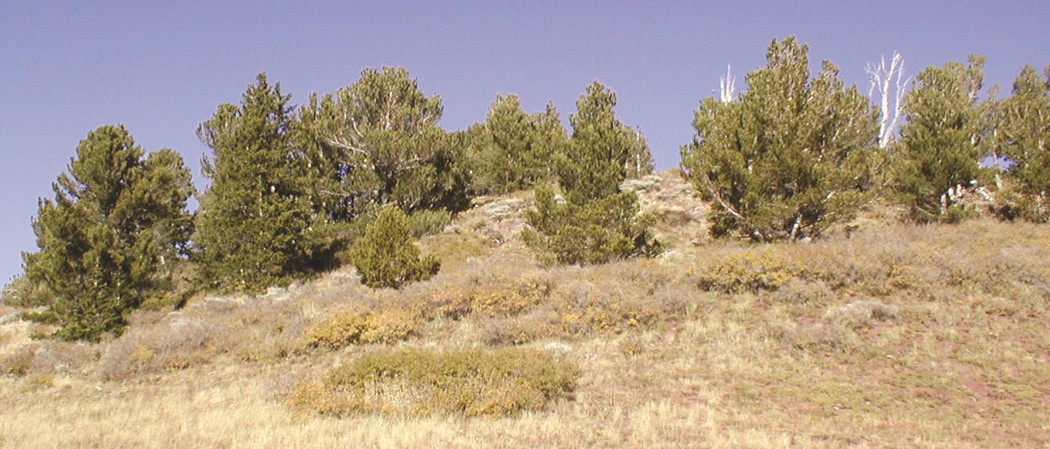
Limber pine forest
Limber pine (Pinus flexilis) tends to occupy the higher ridges in Utah. Although limber pine occupies less than a million acres in Utah, its common name, “white pine,” honors 19 place names in the state.
Bristlecone Pine
Bristlecone pine (Pinus longaeva) occupies a very small range in Utah, mostly on upper elevation plateaus in southern and western Utah. This species is best known for including the oldest living tree, and perhaps the oldest organism, on Earth.
- Total of 1.1 million acres of pines at 7,000 to 10,000 feet elevation, depending on species.
- Ponderosa pine naturally grows in open, park-like stands maintained by frequent fire; fire suppression leads to dense stands; thick bark protects older trunks from fire damage; commercially valuable.
- Lodgepole pine tends to grow in pure stands that regenerate quickly after a fire from seed; some trees have serotinous (closed) cones that open after a fire to release their seeds; commercially valuable.
- Limber pine occupies cold, windy, steep, rocky sites, often near tree line; not commercial; regeneration depends on seed caches made by birds like Clark’s nutcracker; some Utah limber pines are over 2,500 years old.
Oak-Maple Type
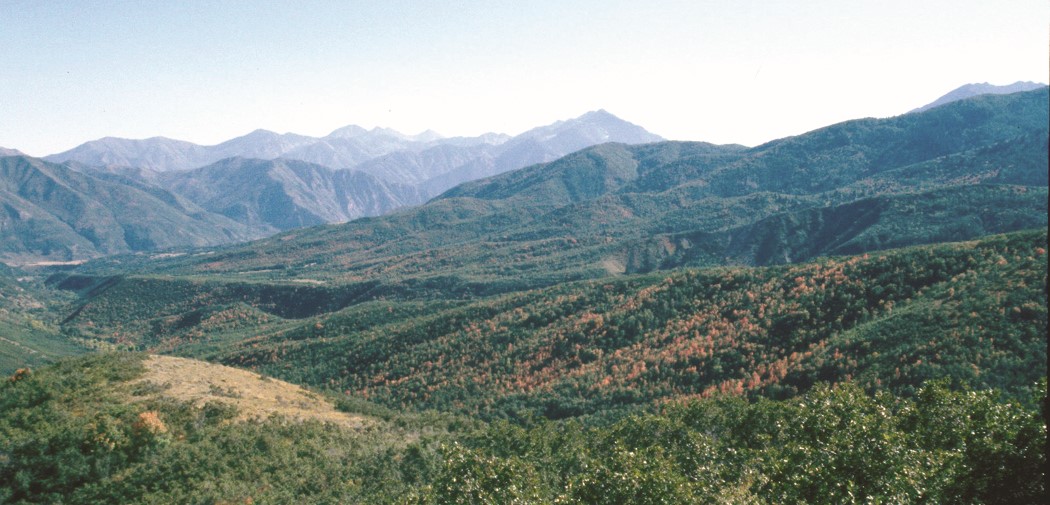
Gambel oak (Quercus gambellii) and canyon or bigtooth maple (Acer grandidentatum) woodlands occupy our lower mountain slopes and foothills, and offer outstanding fall color. As urban development expands and more homes are built in these woodlands, their management is increasingly important to prevent fire disasters.
- Common native species on lower elevation foothills in Utah, between 5,000 and 7,800 feet.
- Important for birds and big game.
- Although they often grow together, oaks prefer southern aspects while maples prefer northern and eastern aspects.
- Oak is fire adapted; it grows back quickly from root sprouts after a fire kills the tree tops.
- Oak tend to be scrubby small trees less than 30 feet in height, but can reach 60 feet tall.
- Maple tends to have several stems and can reach 50 feet in height.
Published June 2004, updated May 2012.

